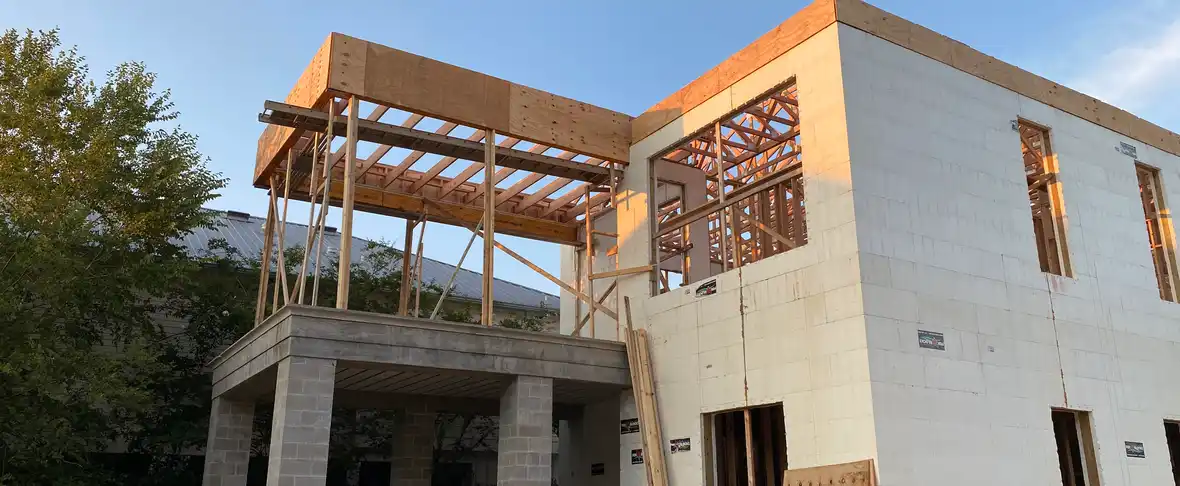![Can You Mix Metal and Wood Studs? [The Challenges and Alternatives]](https://d10s47zocopdpt.cloudfront.net/web/images/banners/Can-You-Mix-Metal-and-Wood-Studs.png?auto=compress%2Cformat&crop=focalpoint&fit=crop&fp-x=0.5&fp-y=0.5&h=461&q=80&w=1180&s=9b12e266f0aa7ae2c31062255a88aced)
Can You Mix Metal and Wood Studs? Understanding the Mix and a Better Alternative
![Can You Mix Metal and Wood Studs? [The Challenges and Alternatives]](https://d10s47zocopdpt.cloudfront.net/web/images/banners/Can-You-Mix-Metal-and-Wood-Studs.png?auto=compress%2Cformat&crop=focalpoint&fit=crop&fp-x=0.5&fp-y=0.5&h=461&q=80&w=1180&s=9b12e266f0aa7ae2c31062255a88aced)
In construction, finding the perfect material to do the job while also staying within budget and on time can be quite difficult. When it comes to framing materials, metal and wood studs have always had builders with one preference or another. While most buildings are typically either all wood or all steel studs, this is not always the case. Each type of stud, metal or wood, has its own pros and cons. Mixing metal and wood studs, or leaving the studs out altogether, can result in an interesting mix of building performance, budget-friendliness, and construction speed.
Metal vs. Wood Studs

Wood studs are incredibly popular due to their typically low price, ease of installation, and performance. Wood studs are strong and can be used to build quickly. While not as strong as steel studs, they are still quite strong and can be more forgiving for the carpenters working with them. When the prices of wood skyrocket, steel studs can be an attractive alternative.
Steel studs can cost more than wood studs, but they are incredibly strong. The manufacturing process for steel studs results in tightly controlled dimensions and consistency between various studs. Steel studs conduct heat more efficiently than wood which reduces the entire wall assembly’s insulation, but makes for a stronger wall compared to wood.
Blending the Two
Mixing metal and wood studs in a construction project isn’t a new idea. This blend of materials attempts to marry the strength and durability of metal with the cost-effectiveness and ease of installation associated with wood. Wood is a better insulator while steel is more dimensionally stable. Both wood and metal studs in a wall assembly provide a thermal bridge substantially reducing the overall thermal efficiency of the assembly. When done correctly, the combination can make the most of the benefits of each material. Mixing these materials can often be seen in restoration projects or specific architectural endeavors, but the union does come with its share of challenges.
The Problem with Mixing
One primary concern with mixing metal and wood studs revolves around the different rates at which metal and wood expand and contract with temperature fluctuations that can lead to structural weaknesses, especially in regions with extreme temperature variances. Also, the materials may react differently to moisture with wood being more susceptible to rot and metal to rust. The mixing of metal and wood studs requires a well-thought-out design and execution to ensure the structural integrity of a building, particularly in the face of strong winds or other extreme weather conditions.
A Strong Alternative: Insulated Concrete Forms (ICFs)

Dissecting the benefits and challenges associated with mixing metal and wood studs would not be complete without looking at leaving out the studs entirely. Insulated Concrete Forms (ICFs) are blocks made from sheets of insulating foam held together with a system of ties. The blocks are stacked on site and steel reinforcing bars are added to the hollow space formed by the blocks. Once in place, concrete is poured into the hollow space and allowed to set. The resulting steel-reinforced structure is incredibly strong, low maintenance, and durable.
Resilient
Steel and wood studs can both be damaged by water, and concrete is naturally water-resistant. The durability of ICFs is unparalleled. They stand resilient against natural disasters like hurricanes and earthquakes, and ensure a long-lasting structure that requires minimal maintenance over time.
Energy Efficient
The interior and exterior planes of continuous insulation formed naturally by the ICF blocks also work as a distinct advantage over wood and metal studs. Energy efficiency is at the core of ICF construction. The insulating properties of the foam and concrete create an energy-efficient envelope that significantly reduces heating and cooling costs. This attribute not only lowers the operational cost of buildings, it also contributes towards a lower carbon footprint that aligns with modern sustainable building practices.
Easy to Use
The installation of ICFs is a straightforward process that provides for faster construction timelines compared to traditional methods. ICF block construction requires significantly less skilled labor than other construction methods. The ease of installation and the long-term savings in energy and resiliency costs position ICFs as a long term cost-effective alternative.
Update Your Design Plan with Fox Blocks ICFs
Fox Blocks stands at the forefront of delivering high-quality ICF products and solutions. With a robust portfolio of successful projects, Fox Blocks leads the transition toward a more sustainable, efficient, and durable construction industry. The benefits of ICFs over the traditional mix of metal and wood studs are undeniable. Fox Blocks are the superior choice for many construction projects.
The fusion of metal and wood studs can be successful with meticulous design and execution, however, choosing insulated concrete forms by Fox Blocks is the discerning choice for modern construction needs. With unmatched durability, energy efficiency, and ease of installation, ICFs pave the way for a new era of construction that blends innovation with sustainability.
Are you ready to step into the future of construction with Fox Blocks? Reach out to their team of sustainable construction experts today to learn more!